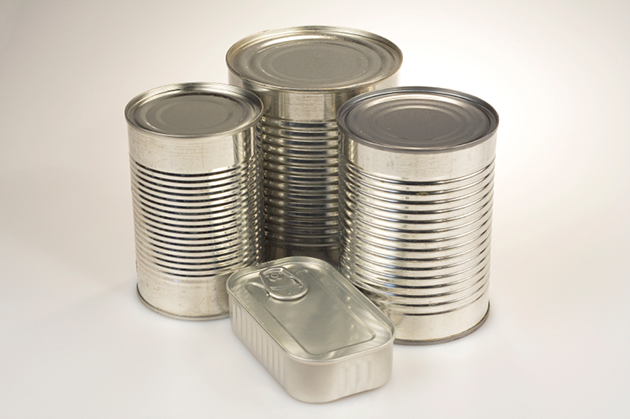There is often some customer confusion when it comes to recycling soup cans. The soup cans consumers buy at the grocery store these days are made out of steel and tin. While the majority of the product is made of steel, soup cans also have a thin layer of tin coating on their insides, which stops them from corroding and keeps the soup fresh. When they are simply made out of steel and tin, these cans are definitely recyclable. However, many soup cans today are also lined with bisphenol-A, a compound that makes the recycling process more difficult.
BPA came to use for consumer items in the 1950s to keep bacteria away from food products, but its safety has been questioned over the last several years. Studies have come up testing BPA’s negative effects on the mind and body, but it is still used in food products today, particularly metal soup cans.
 Another unfortunate consequence of BPA is that the compound is known to contaminate recycling streams. Although many curbside and drop-off recycling services will accept these cans, they are not always easy to fit into the recycling process. Again, if BPA was not lining these soup cans, they would be easily recyclable in just about every curbside program in America.
There are a few different steps consumers can take to either avoid BPA in their soup cans or find the best way to recycle them. Cans at the grocery store with BPA will be marked with resin code #7, so consumers will know whether or not the compound is in the soup they are buying. Alternatives are offered in many stores. If you already have cans with BPA at home, researching if your curbside recycling program or nearby drop-off locations will recycle these cans is a great way to become a more informed consumer.
With about 70% of steel cans recycled per year, they are one of the most recycled products in the U.S. This percentage can rise even higher if can-lining alternatives to BPA, such as tin, are more frequently used as a way to keep bacteria away from food products.
Another unfortunate consequence of BPA is that the compound is known to contaminate recycling streams. Although many curbside and drop-off recycling services will accept these cans, they are not always easy to fit into the recycling process. Again, if BPA was not lining these soup cans, they would be easily recyclable in just about every curbside program in America.
There are a few different steps consumers can take to either avoid BPA in their soup cans or find the best way to recycle them. Cans at the grocery store with BPA will be marked with resin code #7, so consumers will know whether or not the compound is in the soup they are buying. Alternatives are offered in many stores. If you already have cans with BPA at home, researching if your curbside recycling program or nearby drop-off locations will recycle these cans is a great way to become a more informed consumer.
With about 70% of steel cans recycled per year, they are one of the most recycled products in the U.S. This percentage can rise even higher if can-lining alternatives to BPA, such as tin, are more frequently used as a way to keep bacteria away from food products.
 Another unfortunate consequence of BPA is that the compound is known to contaminate recycling streams. Although many curbside and drop-off recycling services will accept these cans, they are not always easy to fit into the recycling process. Again, if BPA was not lining these soup cans, they would be easily recyclable in just about every curbside program in America.
There are a few different steps consumers can take to either avoid BPA in their soup cans or find the best way to recycle them. Cans at the grocery store with BPA will be marked with resin code #7, so consumers will know whether or not the compound is in the soup they are buying. Alternatives are offered in many stores. If you already have cans with BPA at home, researching if your curbside recycling program or nearby drop-off locations will recycle these cans is a great way to become a more informed consumer.
With about 70% of steel cans recycled per year, they are one of the most recycled products in the U.S. This percentage can rise even higher if can-lining alternatives to BPA, such as tin, are more frequently used as a way to keep bacteria away from food products.
Another unfortunate consequence of BPA is that the compound is known to contaminate recycling streams. Although many curbside and drop-off recycling services will accept these cans, they are not always easy to fit into the recycling process. Again, if BPA was not lining these soup cans, they would be easily recyclable in just about every curbside program in America.
There are a few different steps consumers can take to either avoid BPA in their soup cans or find the best way to recycle them. Cans at the grocery store with BPA will be marked with resin code #7, so consumers will know whether or not the compound is in the soup they are buying. Alternatives are offered in many stores. If you already have cans with BPA at home, researching if your curbside recycling program or nearby drop-off locations will recycle these cans is a great way to become a more informed consumer.
With about 70% of steel cans recycled per year, they are one of the most recycled products in the U.S. This percentage can rise even higher if can-lining alternatives to BPA, such as tin, are more frequently used as a way to keep bacteria away from food products.